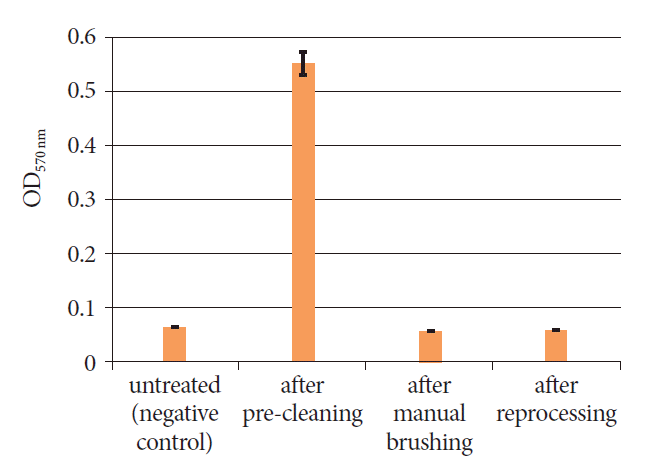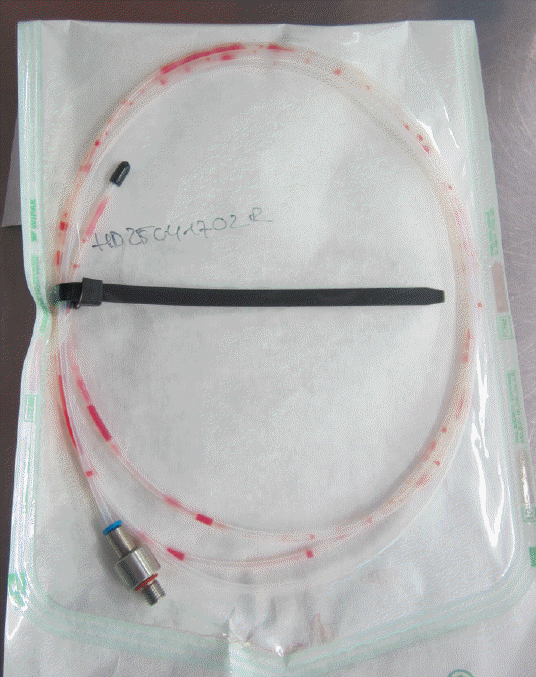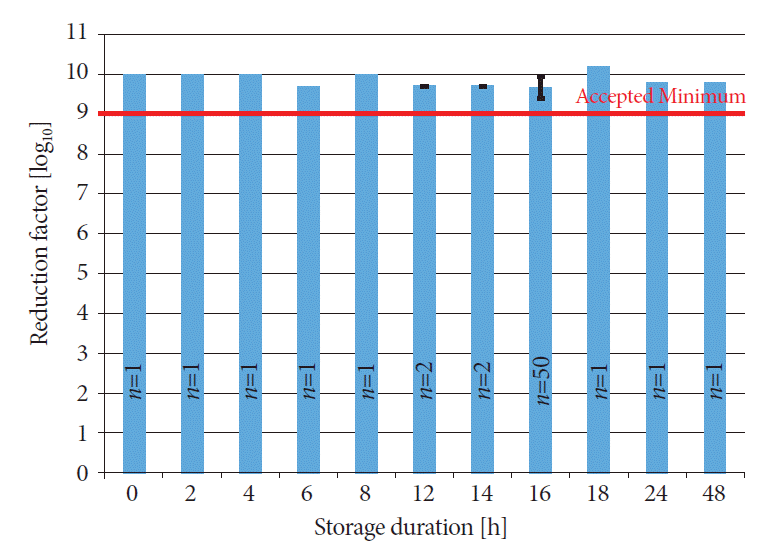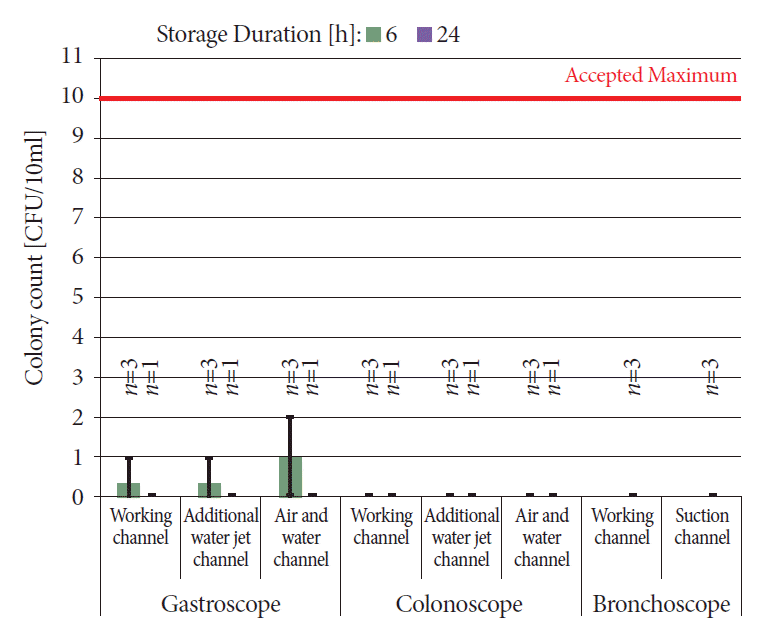INTRODUCTION
MATERIALS AND METHODS
Test material
Contamination
Pre-cleaning, storage and reprocessing
Table 1.
| Pre-cleaning | Immerse the distal end in cleaning solutiona) |
| Suck through until no more contamination is visible in the rinsing solution, but at least 30 seconds | |
| Variable time interval of storage at room temperature | |
| Reprocessing | Place the test object in the basin with cleaning solutiona) |
| Rinse the test object with cleaning solutiona) | |
| Brush the inner lumen with a flexible disposable brush until the brush is free of impurities | |
| Rinse the test object in a basin with demineralised water, rinse the inner lumen | |
| Remove of residual water with medical compressed air | |
| Connect the test object to the loading trolley of the EWD | |
| Start the machine-based reprocessing process in the EWDb) | |
| Dry the test object with medical compressed air | |
a) Protocol 1: Hartmann Bodedex forte 2%; Protocol 2: Hartmann Bodedex forte 1%; Protocols 3 and 4: Dr. Weigert Neodisher Endo DIS active.
b) Protocol 1: Olympus ETD4+GA, Program 2 Standard TR, Hartmann Korsolex Endo Cleaner + Hartmann Korsolex Endo Disinfectant; Protocol 2: Olympus ETD4+GA (Program 1 Standard) + Hartmann Korsolex Endo Cleaner + Hartmann Korsolex Endo Disinfectan; Protocol 3: EWD Wassenburg Adaptascope (normal program) + Dr. Weigert Endo Clean + Dr. Weigert Endo Sept GA; Protocol 4: Olympus ETD3+PAA, Program 6 Standard, Olympus EndoDET + Olympus EndoDIS.
Table 2.
| Pre-cleaning | Wipe the distal end of the endoscope with a non-sterile compress |
| Immerse the distal end in cleaning solutiona) | |
| Aspirate with at least 200 ml cleaning solution; Keep suction valve pressed until no more contamination is visible; but at least 30 sec | |
| Flush the biopsy channel and, if necessary, the additional flushing channel with cleaning solution using a 20 ml syringe until no more visible particles are flushed out | |
| Multiple actuation and subsequent removal of the air/water valveb) | |
| Insert and actuate the cleaning valve several timesb) | |
| Remove the distal end of the endoscope from cleaning solution | |
| Separate the endoscope from the light source, suction and optic rinsing bottle | |
| Variable time interval of storage at room temperature | |
| Reprocessing | Connection to the leak tester and performance of the leak test |
| Immerse the endoscope in the cleaning solutiona) | |
| Remove the valves; Disposal of the biopsy channel valve; Manual brushing of the aspiration and air/water valve; Brush and rinse the valves in deionised water in the secondary basin; Remove water residues with medical compressed air | |
| Flush all channels manually with cleaning solutiona) | |
| Brush manually with a flexible disposable cleaning brush; Pull the brush several times completely through all accessible channels until the brush emerges free of visible dirt | |
| Wipe the entire endoscope; Pay attention to areas that are difficult to access (operating wheels, working channel entrance, distal end with optical lens, connections) | |
| Use the control wheels to detect micro lesions | |
| Remove the endoscope from the cleaning solution while leaving it connected to the leak tester; Immerse in the secondary tank with demineralised water; Rinse all channels to avoid mixing of cleaning and disinfection agents | |
| Blow through the channels with medical compressed air to remove any remaining deionized water | |
| Release the pressure from the leak tester and disconnect the endoscope | |
| Properly fit the rinsing basket and connect the channels and the leak test according to the manufacturer’s instructionsc); Close the EWD and start the program | |
| Check the correct and complete procedure after the end of the reprocessing program | |
| Perform a hygienic hand disinfection | |
| Pull out the rinsing baskets from the EWD; Detach the rinsing adapter from the endoscope; Remove the endoscope from the rinsing basket | |
| Dry the endoscope with medical compressed air | |
Assessment of cleaning and disinfection performance
Investigation of biofilm formation
RESULTS
Test tubes
Endoscopes
Biofilm formation
Fig. 4.





 PDF
PDF Citation
Citation Print
Print






 XML Download
XML Download